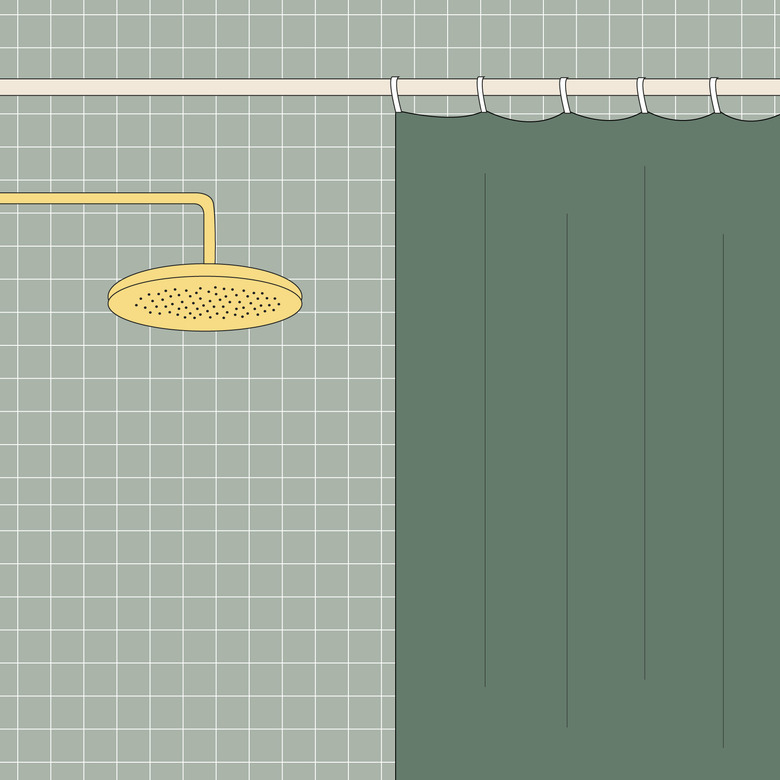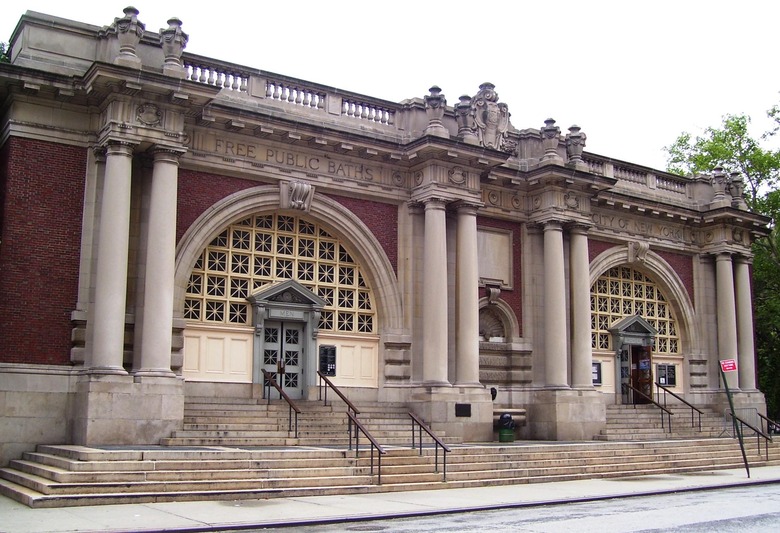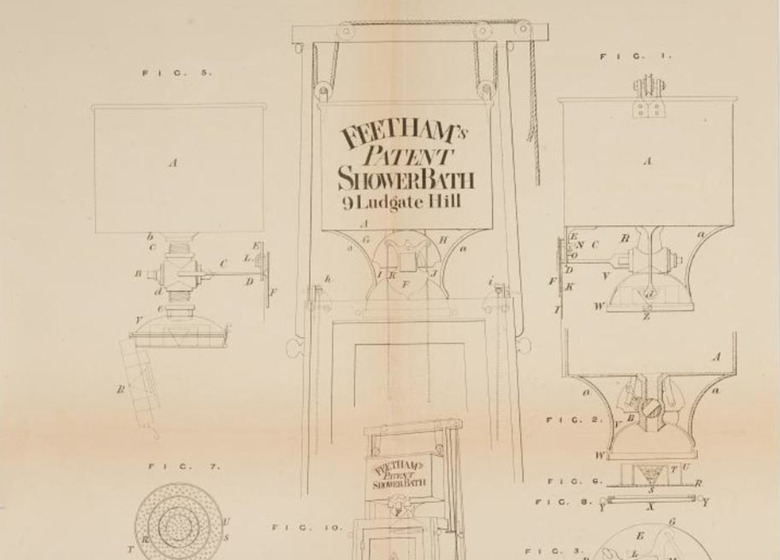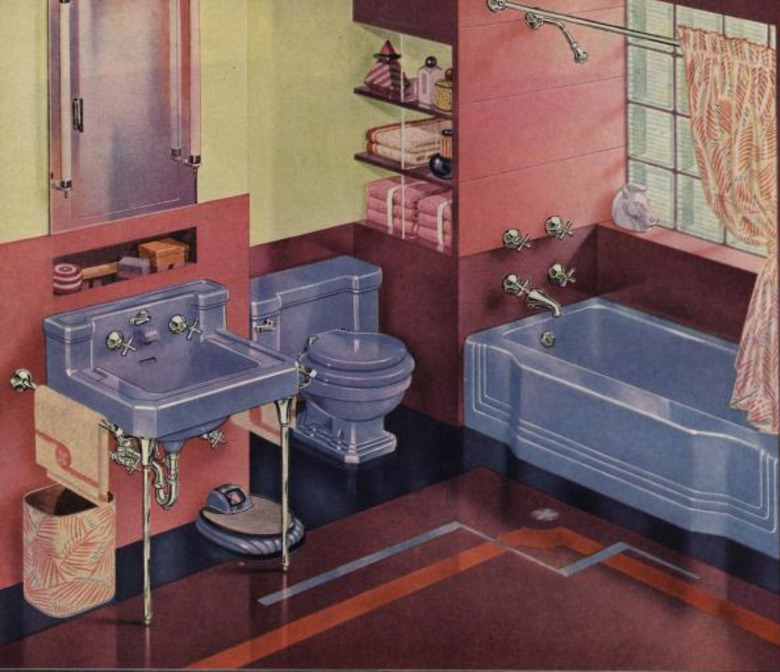When Did We Start Showering Standing Up?
We may receive a commission on purchases made from links.
Between singing and scrubbing, many people enjoying a steamy shower have found themselves wondering, 'when were showers invented? And what did people do before that?' Obviously, people still cleaned themselves and bathing has been an important aspect of human existence since at least the Bronze Age, 5,000 years ago. But the modern household shower has only existed for less than 100 years. Here's the story of the invention of the shower and how it eventually made its way into American homes.
What did people do before showers?
What did people do before showers?
Lower Manhattan was, in the late 19th century, a dirty place. Street cleaning was irregular, apartments were small, and indoor plumbing wouldn't become required by law until 1901 (and even then, many tenement buildings got just one toilet per floor).
If you wanted to get clean, you had a few options — one was to take a bath at home, in a tub filled with water warmed on the stove. But in big, busy families, such soaks were far from luxurious. Your best bet, if you wanted to wash, was to head to one of the public bathhouses dotting neighborhoods like the Lower East Side. For a nickel, you'd be guaranteed a few minutes of (mostly) warm water, a small piece of soap, and a towel (though you wouldn't get to keep it). The bathhouses, throughout the first decade of the 1900s, were wildly popular — at one bathhouse on Rivington Street, an especially hot day nearly caused a riot amongst would-be bathers.
Bathhouses in New York were strictly the domain of the working classes. Uptown, the wealthy were still bathing in copper and porcelain tubs, filled by servants and later via taps connected to the city's water supply system.
When was the shower invented?
When was the shower invented?
That's because the shower, despite its ubiquity in American households now, wasn't especially popular upon its debut in the mid-1700s. In 1767, a stove maker named William Feetham patented a shower meant to be pumped by hand (the idea was that a servant would do the pumping). This would have held huge appeal for servants, who would if Feetham's invention caught on, be spared the task of hauling heavy buckets of water up and down staircases each time their employers wanted to bathe.
Amongst those likely to use the shower, Feetham's shower held less appeal — not only was it constructed to recycle the same water over and over (so: not actually very clean), there was no way to heat the water, meaning it was cold showers only for anyone who dared to install one. This wasn't entirely unpalatable — in The Dirt on Clean: An Unsanitized History, historian Katherine Ashenburg notes that writer Charles Dickens had a cold shower installed in his London home, telling a friend that a cold shower was "a positive necessary of life."
When did showering become popular?
When did showering become popular?
As improvements on Feetham's design continued to be made in the 19th century, the focus of showering was one of economics — unlike costly (and inconvenient) baths, a shower was a way to get large numbers of people clean quickly and cheaply, which is why many early shower prototypes were installed in places like boarding schools and military barracks.
In 1883, the Berlin Public Health Exhibition called the shower "the simplest, quickest, cheapest, cleanest, and withal best bath for people's bathhouses; the one which requires the least space, the least time, the least amount of water, the least fuel for warming water, the least attendance, the least cost of maintenance."
When were showers introduced to homes?
When were showers introduced to homes?
Bathhouses sprung up in major cities, but showers in American homes took a little longer to catch on. Part of this lag was the difficulties of enforcing plumbing-related laws like New York's Tenement House Act — in 1940, according to the census, a full 44% of American homes still didn't have a bathtub or a shower connected to running water. As the 20th century moved forward, and access to running water became more of a given, especially for Americans leaving cities and moving to single-family homes in the suburbs, the shower became not just more palatable but a regular part of bathroom design. In 1954, Challenge: The Magazine of Economic Affairs postulated in a story on the plumbing industry that the industry "confidently predicts that the day is not far off when a bathroom and bathtub (with shower) will become a necessary adjunct to every bedroom in the home."
Design, too, caught up with the interest in showering — in 1927, Kohler became the first company to introduce matching bathroom fixtures. Looking at plumbing fixture advertisements from the 20th century, showers slowly started to be integrated into bathtub suites, which is how we got the elaborate showers (rainforest-themed! Individual shower heads for five people! Water-powered light shows as you bathe!) installed in many homes today.
While most of New York's public bathhouses have closed, there's still plenty of evidence that ample bathing space isn't always a given — see, for example, the number of apartments that come with showers ... in the kitchen.



